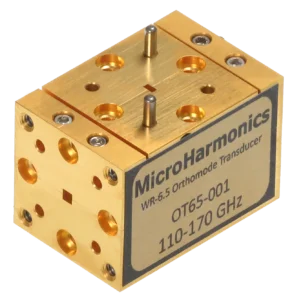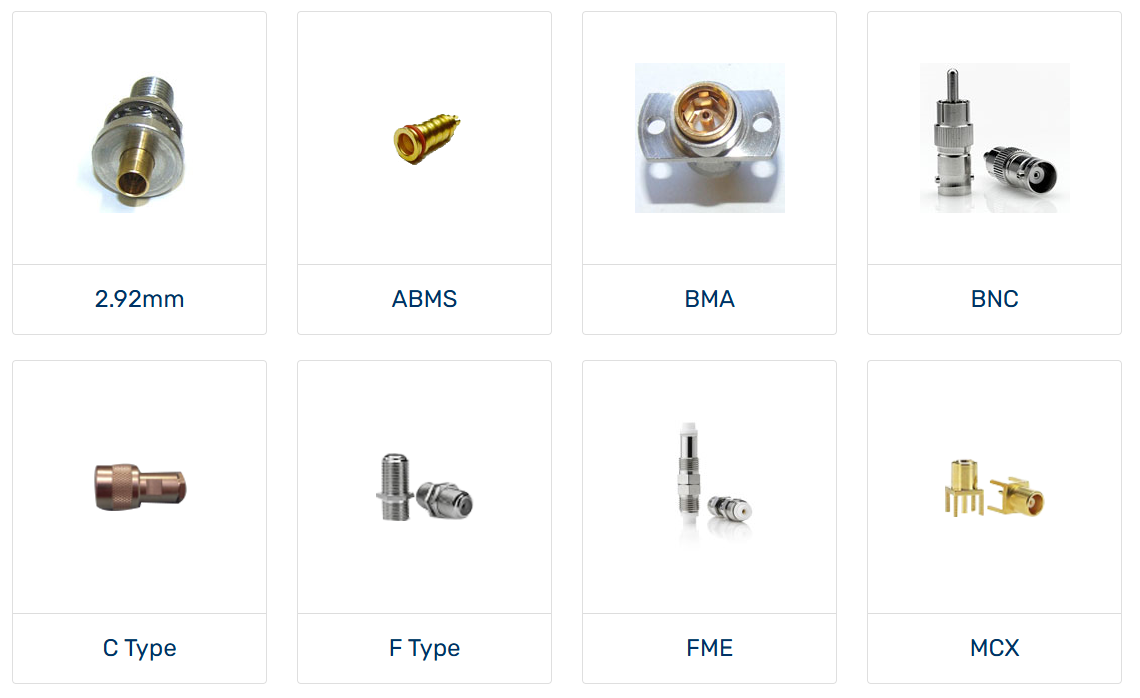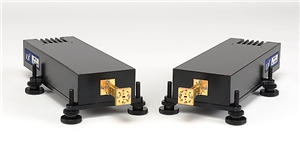In the world of radio frequency (RF) engineering, one of the most essential components in advanced communication and radar systems is the orthomode transducer (OMT). Particularly in high-frequency applications, OMTs play a pivotal role in signal polarisation and isolation. This blog post will explore the key applications, benefits, and challenges of high-frequency OMTs in RF systems, offering insight into why they are indispensable tools for RF engineers.
What is a High-Frequency Orthomode Transducer?
An orthomode transducer is a passive device used to separate or combine orthogonal polarisations of an electromagnetic wave. By splitting or merging these orthogonal polarisation components (typically linear, such as horizontal and vertical), OMTs ensure that RF systems can effectively manage multiple signal paths without interference.
A high-frequency orthomode transducer operates at RF and microwave frequencies, typically above 1 GHz, where efficient signal handling becomes critical. This frequency range is essential for modern communication and radar applications, where large bandwidths and minimal signal degradation are paramount.
Key Applications of High-Frequency Orthomode Transducers
- Satellite Communications
High-frequency OMTs are indispensable in satellite communication systems, where signals are transmitted and received via different polarisation schemes. For example, satellites often use dual-polarisation to maximise bandwidth, with each polarisation representing a separate channel for communication. An OMT allows the separation of these channels without cross-polarisation interference, ensuring clear and efficient signal transmission. - Radar Systems
In radar systems, polarisation plays a critical role in enhancing detection capabilities, reducing interference, and improving signal-to-noise ratios. High-frequency OMTs are used to handle the polarisation of transmitted and received radar signals, ensuring optimal performance in complex environments. By effectively isolating orthogonal polarisations, these devices enable advanced radar functionalities such as polarisation diversity and dual-polarisation radar imaging. - Multi-Band Systems
Modern RF systems, particularly in telecommunications and aerospace, often require multi-band operation. High-frequency OMTs are vital in these systems, enabling the simultaneous use of multiple frequency bands with minimal interference. The ability to combine or split signals across different frequency bands while maintaining high isolation is key to maximising spectral efficiency in complex multi-band networks.
Benefits of High-Frequency Orthomode Transducers
- Enhanced Signal Integrity: High-frequency OMTs help preserve signal quality by minimising polarisation crosstalk and ensuring that each polarisation path remains separate and unaffected by others.
- Improved System Efficiency: By allowing for the simultaneous transmission of two orthogonal polarisation states over the same frequency band, OMTs enable RF systems to double their bandwidth utilisation without requiring additional spectrum, improving overall system efficiency.
- High Isolation and Minimal Interference: The precise isolation between orthogonal polarisations offered by high-frequency OMTs makes them ideal for sensitive applications where even minimal interference could cause signal degradation or system failure.
- Versatility in Complex Environments: The ability to handle multiple frequencies and polarisation schemes makes high-frequency OMTs versatile, suitable for a wide range of applications in both commercial and military-grade RF systems.
Challenges in Using High-Frequency OMTs
Despite their advantages, high-frequency OMTs present some challenges, particularly in design and material selection. As frequencies increase, the size and material requirements for the device become more stringent. The following challenges are common:
Technological Advancements in High-Frequency OMTs
As the demand for higher-performance and more efficient communication systems grows, technological innovations in OMT design have accelerated. Advances in materials science, such as the use of low-loss ceramics and advanced composites, have allowed OMTs to perform more effectively at higher frequencies. Furthermore, improvements in manufacturing techniques, such as 3D printing and precision machining, have made it possible to create more compact, reliable, and cost-effective OMTs.
One notable example of innovation in this area is the millimetre-wave orthomode transducers developed by companies like Micro Harmonics. These OMTs are designed specifically for high-frequency applications, particularly in the millimetre-wave range (30 GHz and above), where they offer exceptional performance in maintaining signal integrity while isolating orthogonal polarisation states. You can learn more about their advanced offerings in millimetre-wave OMTs here.
Additionally, the integration of digital signal processing (DSP) and software-defined radio (SDR) technologies has led to more flexible RF systems that can dynamically adjust polarisation and frequency parameters. This level of flexibility further enhances the role of OMTs in modern RF applications.
Conclusion
High-frequency orthomode transducers are a critical component in advanced RF systems, particularly in satellite communications, radar, and multi-band operations. Their ability to separate and combine orthogonal polarisation states with high precision enables engineers to maintain system efficiency, signal integrity, and minimal interference. While challenges remain in terms of material selection, thermal management, and manufacturing complexity, ongoing technological advancements continue to drive the evolution of OMTs.
For RF engineers, understanding the role of high-frequency OMTs and keeping up with the latest developments in their design and application is crucial for ensuring optimal system performance in an increasingly complex RF landscape.




